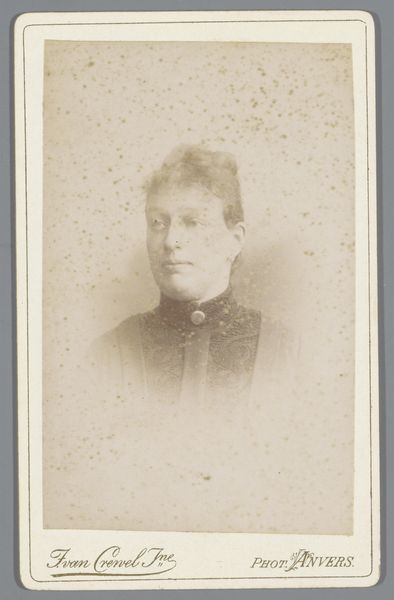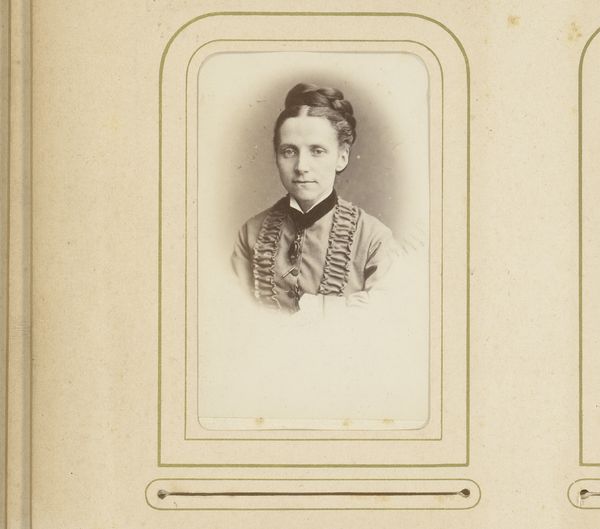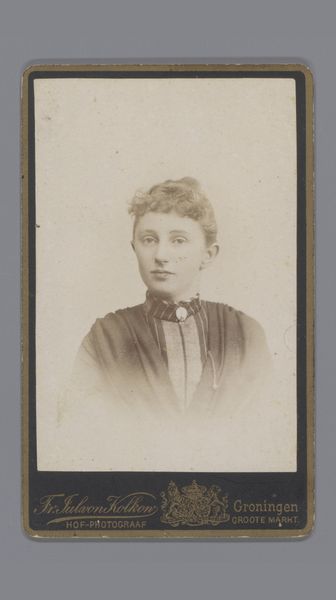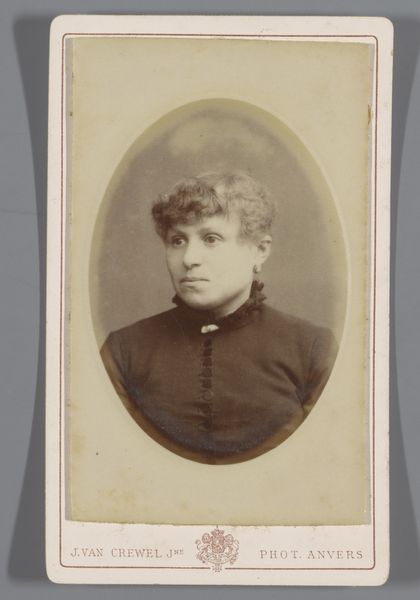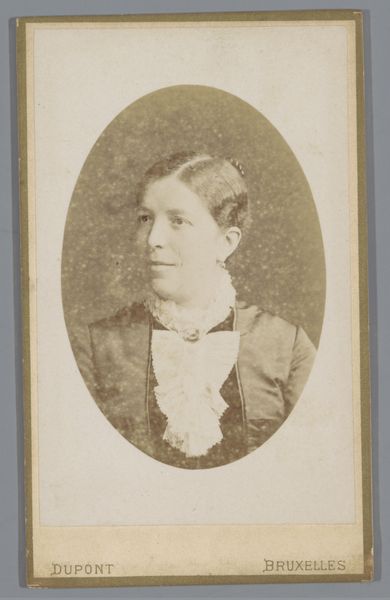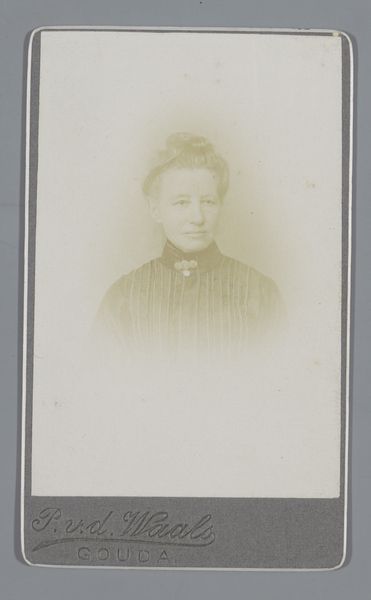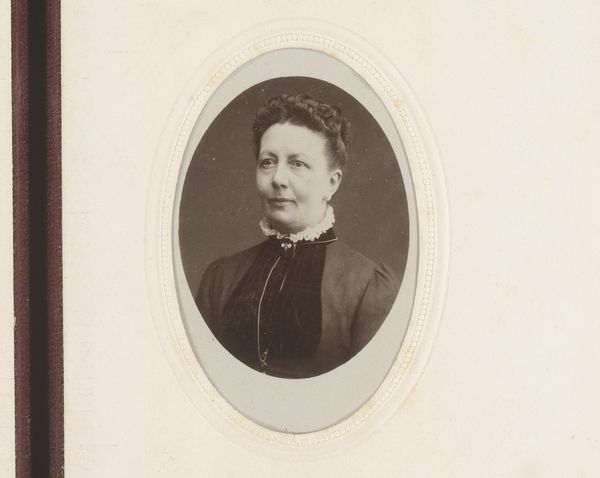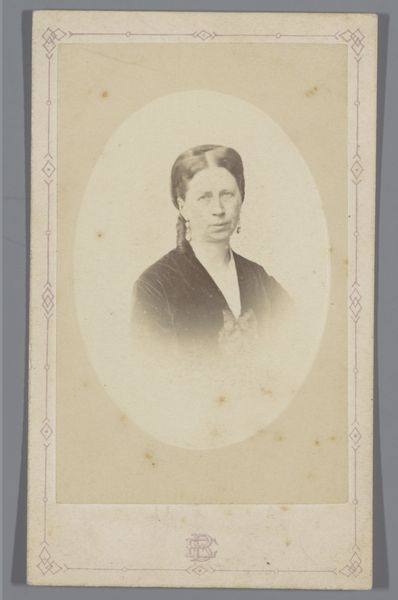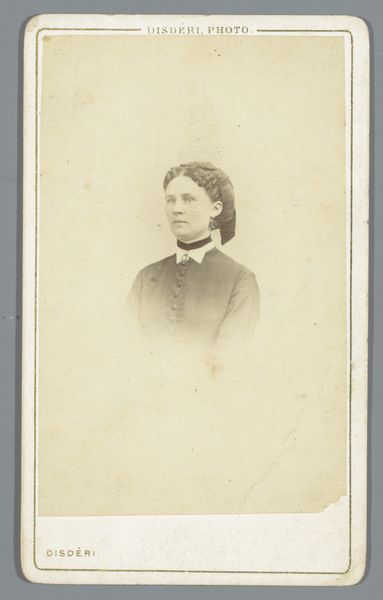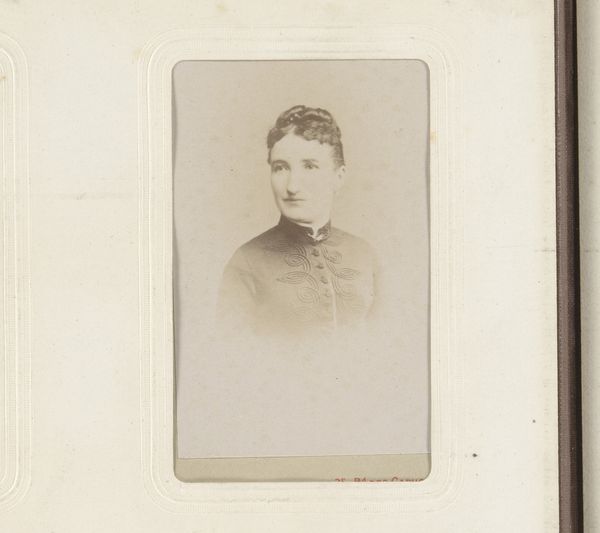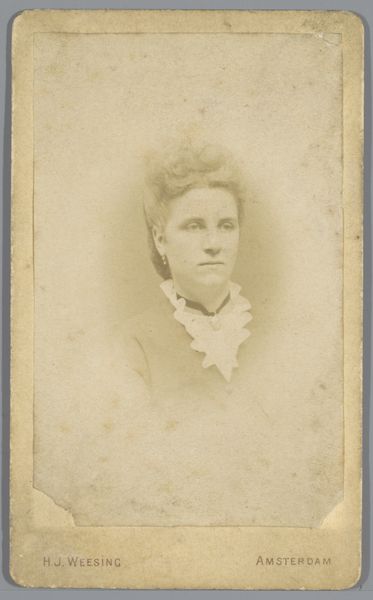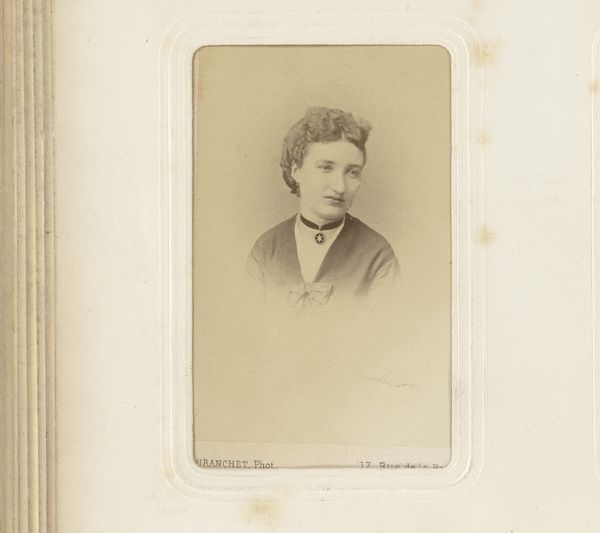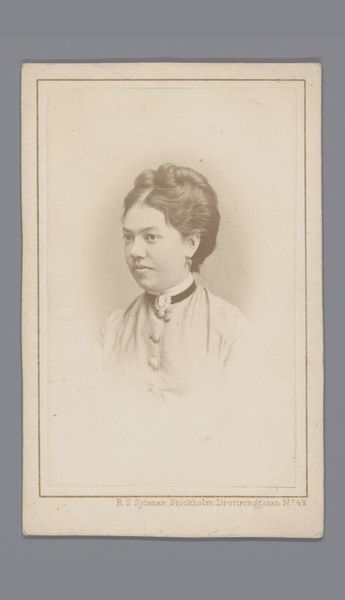
#
aged paper
#
homemade paper
#
paper non-digital material
#
flat design on paper
#
light coloured
#
personal journal design
#
folded paper
#
publication mockup
#
paper medium
#
design on paper
Dimensions: height 97 mm, width 62 mm
Copyright: Rijks Museum: Open Domain
Curator: Here we have an albumen print dating back to 1865, entitled "Portret van Frans Swaenen," by Stalins & Janssens. It offers a fascinating glimpse into the visual culture of the mid-19th century. Editor: It’s remarkable, isn’t it? The subtle sepia tones create a strong sense of nostalgia. The oval frame within the rectangular paper further isolates the subject and draws attention to the gaze. Curator: Exactly. Photography at this time served very specific purposes. Portraiture became democratized, giving access to broader representation that was often tied to social identity and aspirational values. You’ll note Swaenen is adorned in a tailored suit; there is likely a purpose in staging him this way. Editor: The flatness is also quite striking. Without the dynamic range of light, the details on the suit fade into the dark ground behind it. One starts to discern geometric relationships—the circle that encloses him, the triangles that structure his chest—to piece the form back together. Curator: And who was Swaenen, we may ask? Without further metadata on this photographic practice, there is still much unknown about his positioning and influence. What is sure, though, is that this image marks a certain societal footprint, where the bourgeois citizen utilizes photography to signify self-image and permanence. Editor: There is a lovely imperfection to the edges as well, a roughness that exposes its material composition—it seems like he's in a bubble that could pop at any moment. Given the way the light sits, and his centered position, I am led to believe this aesthetic outcome was intentional. Curator: Perhaps Swaenen or the artists intended to create that sense of temporal and historical relevance, while making him seem approachable by those viewing from the present. There’s a distinct interaction and statement on Swaenen's place in society communicated here, not only for the mid-19th century but also for us as audiences today. Editor: By understanding those subtle yet crucial geometric relationships—oval within rectangle, shadow and light—we start to reconstruct an archive based on semiotics. It moves toward building an aesthetic register about this man and his time. Curator: Indeed, a portrait unveiling the intersectional dialogues of identity, representation, and visual culture. Editor: An exquisite specimen; it showcases the potential of early photography.
Comments
No comments
Be the first to comment and join the conversation on the ultimate creative platform.
